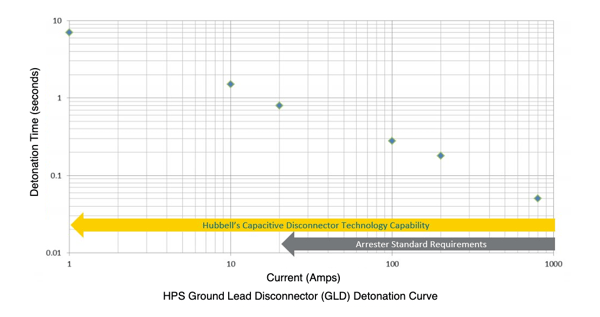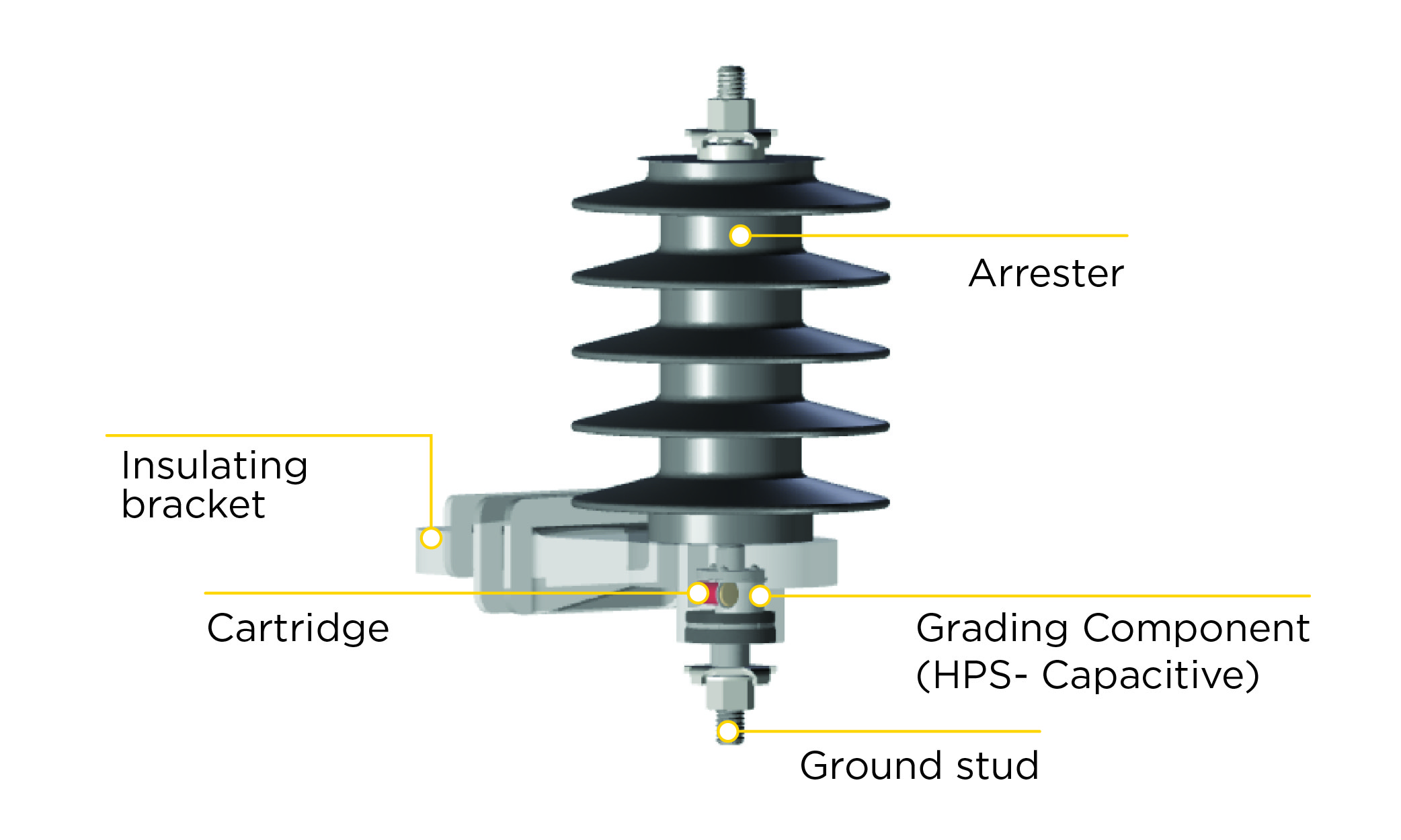 Electric utility operating system reliability is an important factor of utility performance. As a common practice, distribution arresters are assembled with a ground lead disconnector (GLD) designed to respond to arrester fault current during a short by detonation of a cartridge inside of the disconnector housing.
Electric utility operating system reliability is an important factor of utility performance. As a common practice, distribution arresters are assembled with a ground lead disconnector (GLD) designed to respond to arrester fault current during a short by detonation of a cartridge inside of the disconnector housing.
Fault Current’s Path During a Short Circuit
In the rare event of an arrester’s short circuit, fault current flows through the arrester and through the grading component. The flow of fault current produces a voltage across the grading component and the spark gap. If the voltage is high enough to maintain the arc, heat is transferred to the cartridge. This heat will cause an ignition and results in a detonation of the cartridge. The gas pressure then separates the disconnector and propels the ground lead terminal away from the arrester. Separation of the arrester ground lead provides a visual indication of the disconnection and allows the system to reclose, preventing lockout from occurring.
It is important to understand that the arrester is designed to withstand system overvoltages and safely divert many lightning and switching surges throughout its service life. An arrester's capability to withstand this duty is demonstrated through various IEEE and IEC type tests. These events will not cause disconnector operation, instead the Ground Lead Disconnector will only operate if the arrester is overloaded and the previously mentioned fault current flows through the arrester.
The Hubbell Difference
Arrester standards require disconnector operation at fault currents down to 20 Amps. Hubbell Power Systems, Inc. utilizes a proprietary capacitive grading technology which increases the ground lead disconnector reliability by ensuring operation at fault currents as low as 1 Amp. This further prevents lockouts from occurring and guarantees field personnel will be able to locate the disconnected arrester from the ground.

For more information about distribution arresters and ground lead disconnectors, download our Lightning Surge Arresters sales flyer or contact your Hubbell Power System's representative.

